
Challenge
Severe autism is often a life time issue. Both autistic children and their care-givers suffer from this health issue. Yet general public lacks understanding of this issue.
How do we raise awareness of autism and call for action through digital storytelling?
My role
Entire product design from user research to conceptualising, prototyping, iterating and testing.
Teammates
I worked with two other interaction design students for this project.
Timeframe
3 months (2019)
Empathise with the user
Through a series of background, qualitative research methods such as survey and interview, I was able to understand user’s needs and concerns and thereafter came up with user profiles and personas.
Background research
Find answers to following questions:
- What motivates people to commit acts of altruism;
- What people’s latent needs when it comes to acts of altruism;
- Whether or not they find charities fulfil their needs;
- People’s knowledge about developmental disorders;
- What problems they find in existing charities.
Quantitative survey
The survey followed a qualitative format with the intention to ask about people’s thought processes and subjective views rather than objective information. I received in total 47 responses for the questionnaire survey.Interesting results have come to life. For instance, more participants prefer to connect with whoever they help than not to connect.
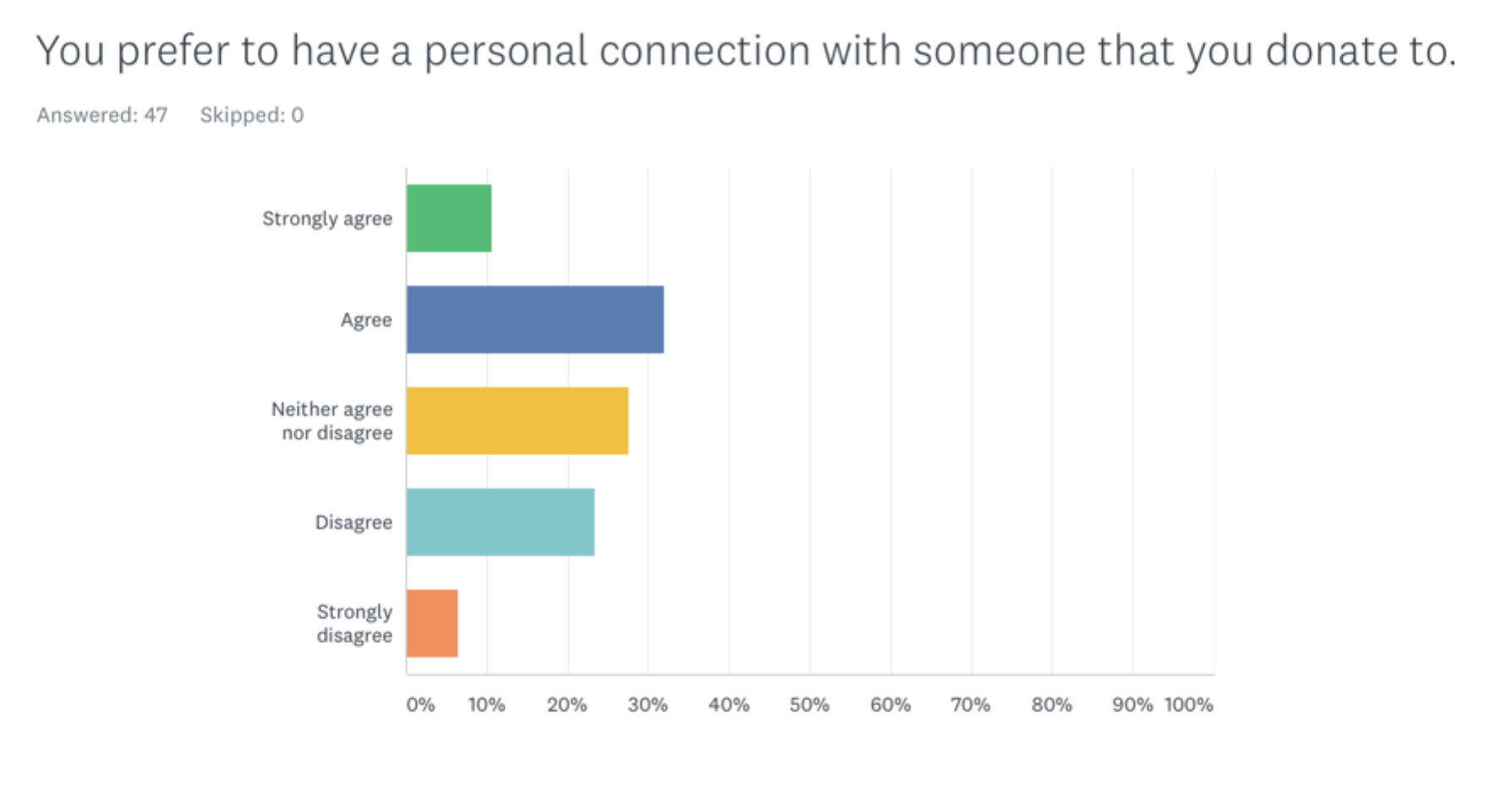
Survey Summary
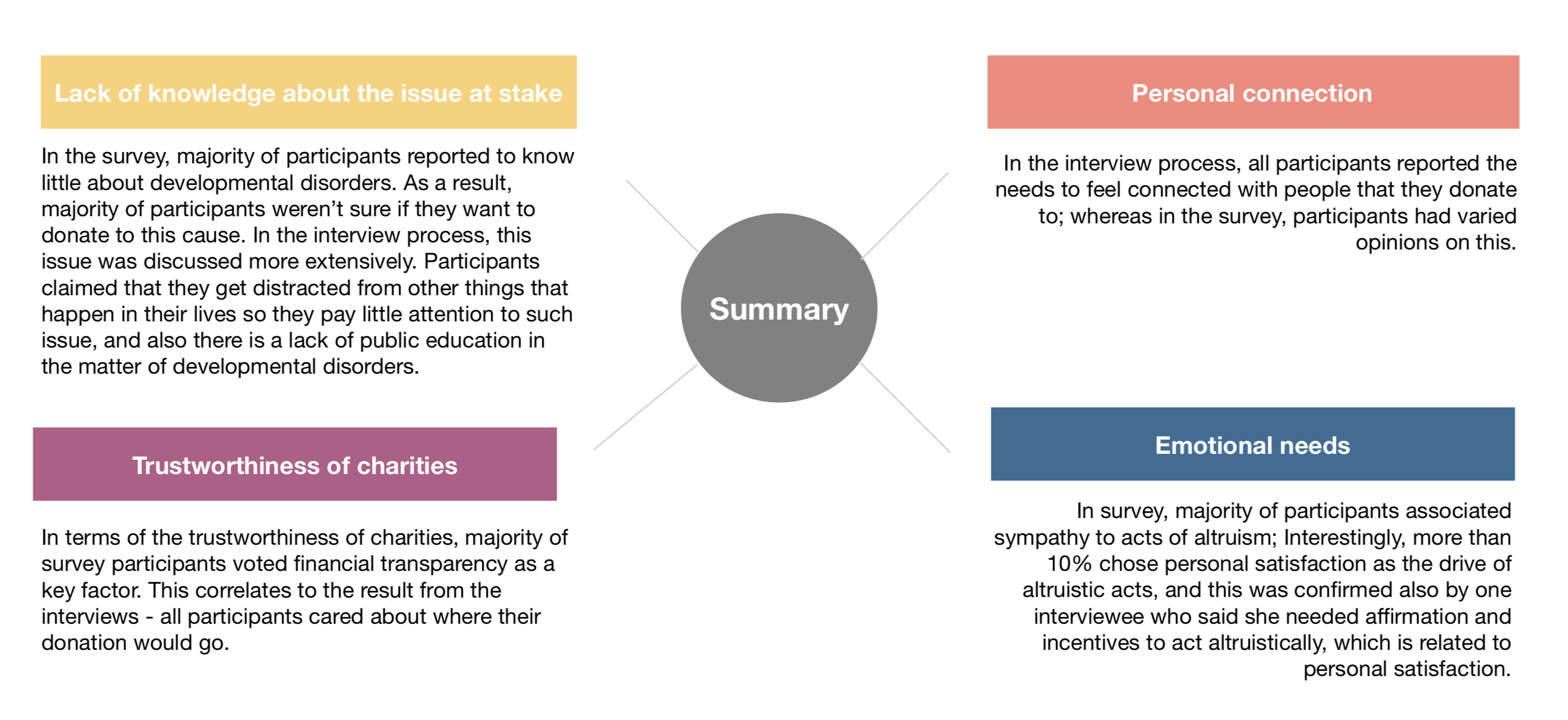
Focus group interviews
I recruited 4 people for the interview. I mainly used open-ended questions to elicit users to reveal their thought processes regarding how effective they think charities are and how well they know about autism spectrum disorder. During the interview process, sample questions were only referred to when I ran out of questions to ask. My approaches to the interview focused on interviewee’s first-hand experiences to particular topics by probing and asking related questions to let them reveal more about their thought processes and patterns.
Four themes
Four themes stood out from interview result analysis.
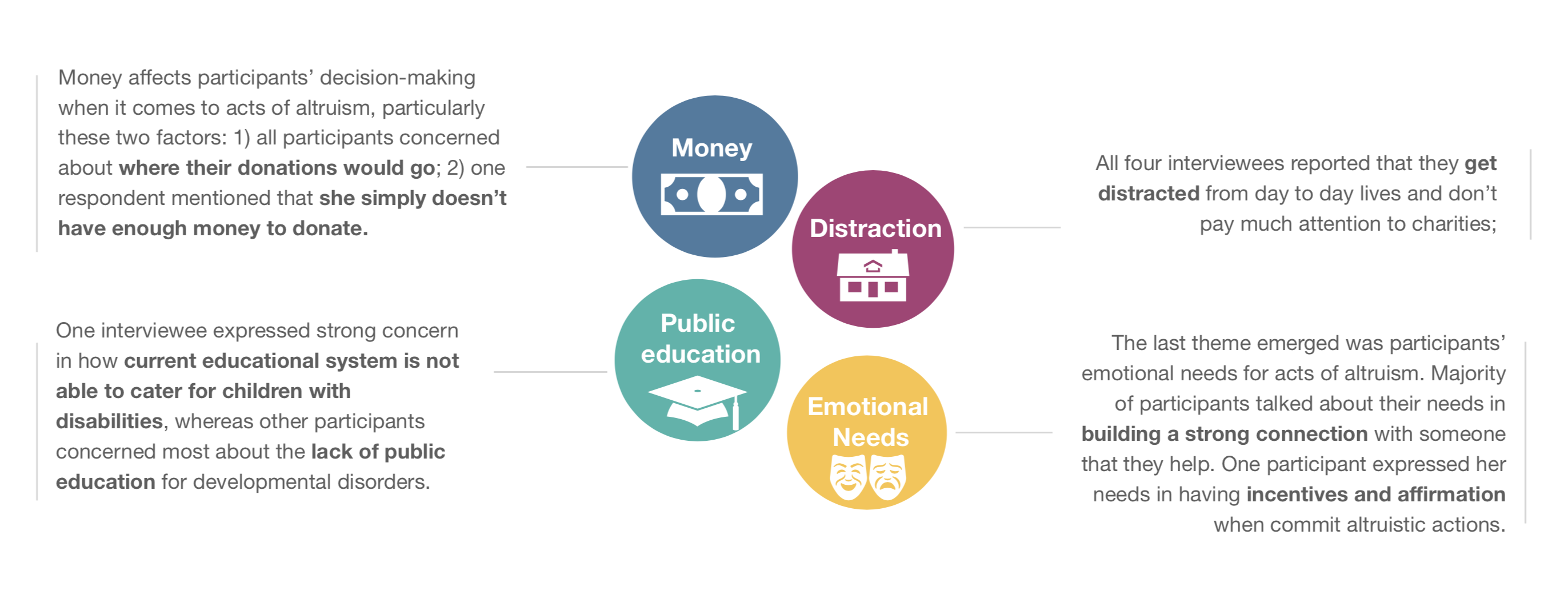
User needs
A set of user needs has therefore surfaced.
- Need good storytelling that speaks to their hearts and motivates them to act;
- Need to be motivated and know the values of their action;
- Need to develop a connection with people they help;
- Need a sense of achievement;
- Need to know how exactly their donations help the person in need;
- Need to receive positive feedback from their actions.
Personas


Conceptualise
Initial concepts
We came up with 7 initial concepts, including VR device, digital gallery, game machine ect. These concepts include a lot of information and a long process. Users are likely to feel confused and are not engaged enough to take action by the end.
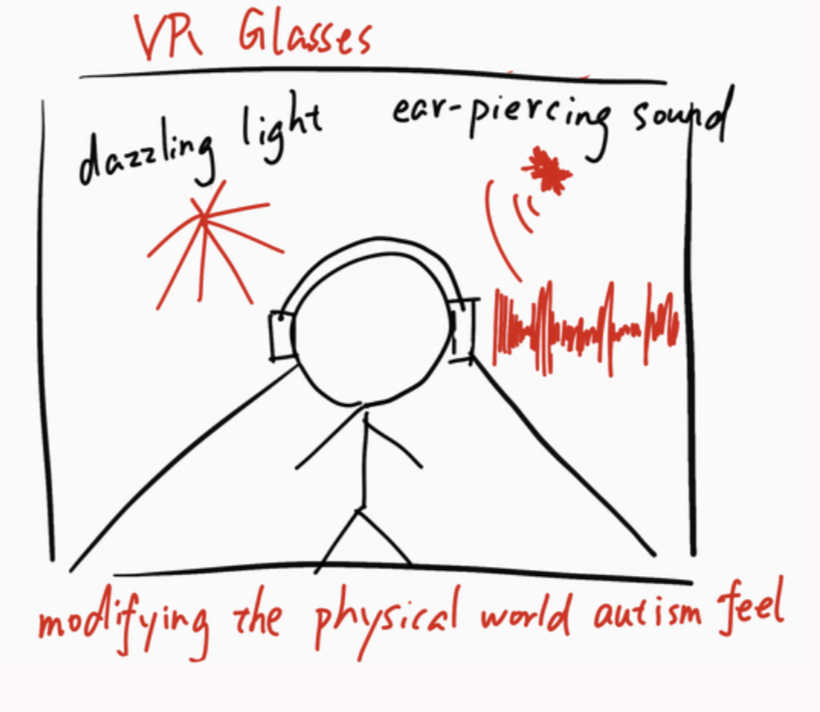
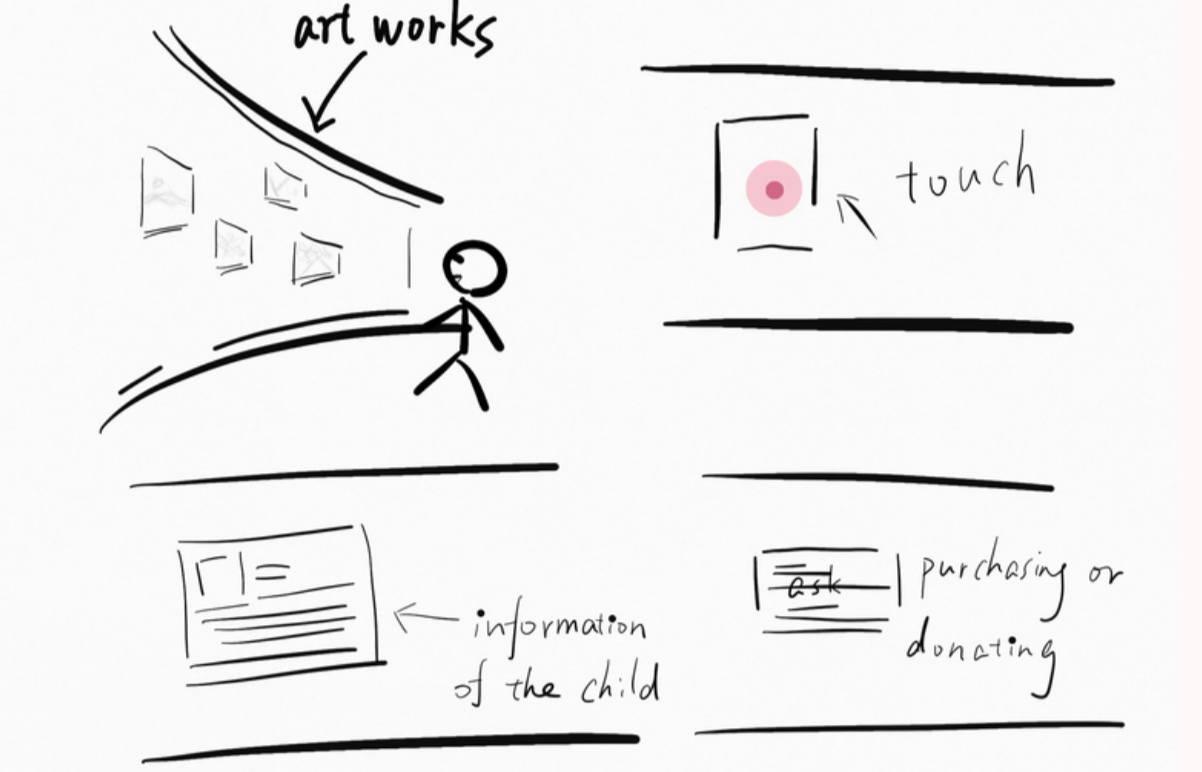
Final concept
Based on the analysis of initial concepts, we abandoned some concepts and combined several ideas together in order to perfect our final concept. The final product is a large interactive screen based device with functions of hand touching, taking live photos and watching interactive videos.

Understand the experiences
Storyboard
Storyboard helps us identify crucial moments during the experience of university students going past an interactive screen based device at university and how they interact with it to feel compassionate about autistic children and want to contribute to the cause.


Scene 1: Lisa finished today's lecture, and was on her way to the bus stop at the front of the university campus.
Scene 2: She suddenly stopped as she was attracted by the large screen near the bus stop, and there were few students just like her stopped and standing in front of the screen. She then discovered that this big screen is actually a selfie-taking machine. she waited for the previous person finished using the machine and then she went forward to the screen.
Scene 3: She was shocked at the first time when she saw a sad boy's face on the screen. she realised that this machine might not be just for taking selfies.
Scene 4 : She started to interact with the screen and then watched the video that shown on it. she discovered that this machine is used to help autistic children. She felt quite sympathetic and wanted to help those children.
Scene 5 : She took some selfies and paid for the photos as she think this is a better way to help autistic children than just randomly donate money to a charity.
Scene 6: She felt a sense of satisfaction about helping people, and went home happily.
User testing & iteration
physical prototype
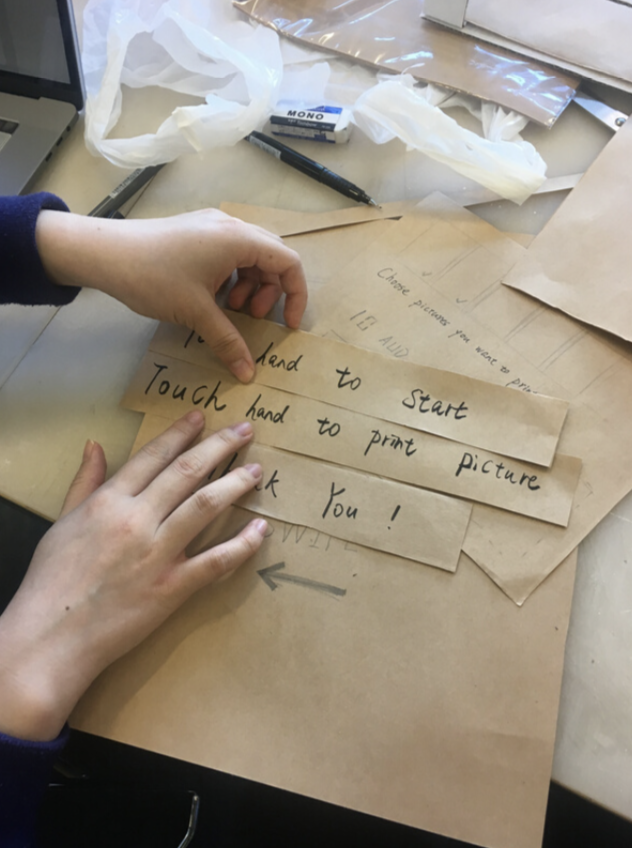
We applied the method of physical prototyping to generate a model of our solution. We used cardboard to make the "frames" and paper the "screens". We invited 3 participants to do the testings: Think-aloud; User observation; Wizard of Oz; Post experience semi-structured interview
Identified problems after first round user test are, for instance, the button for switching to the next part is not easy to spot. There is no way users can track where their donation goes. Changes were made accordingly.
Low-fidelity prototype
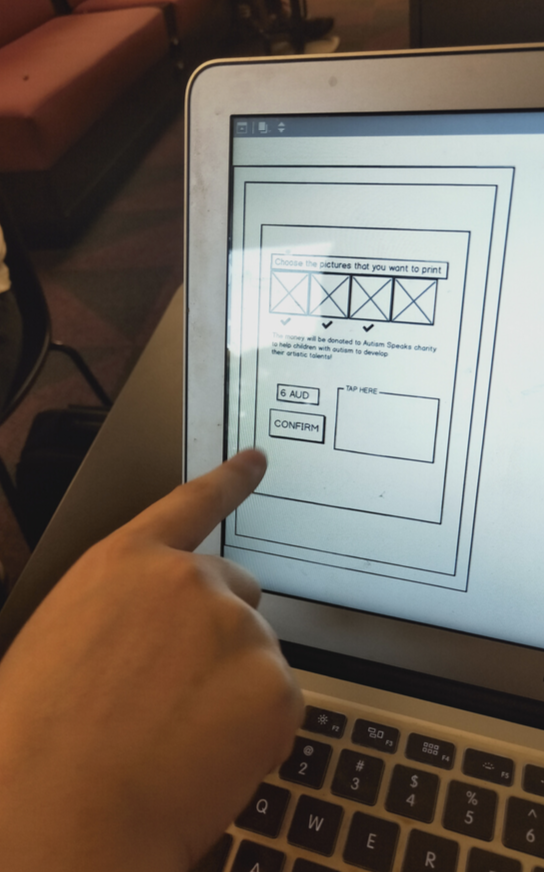
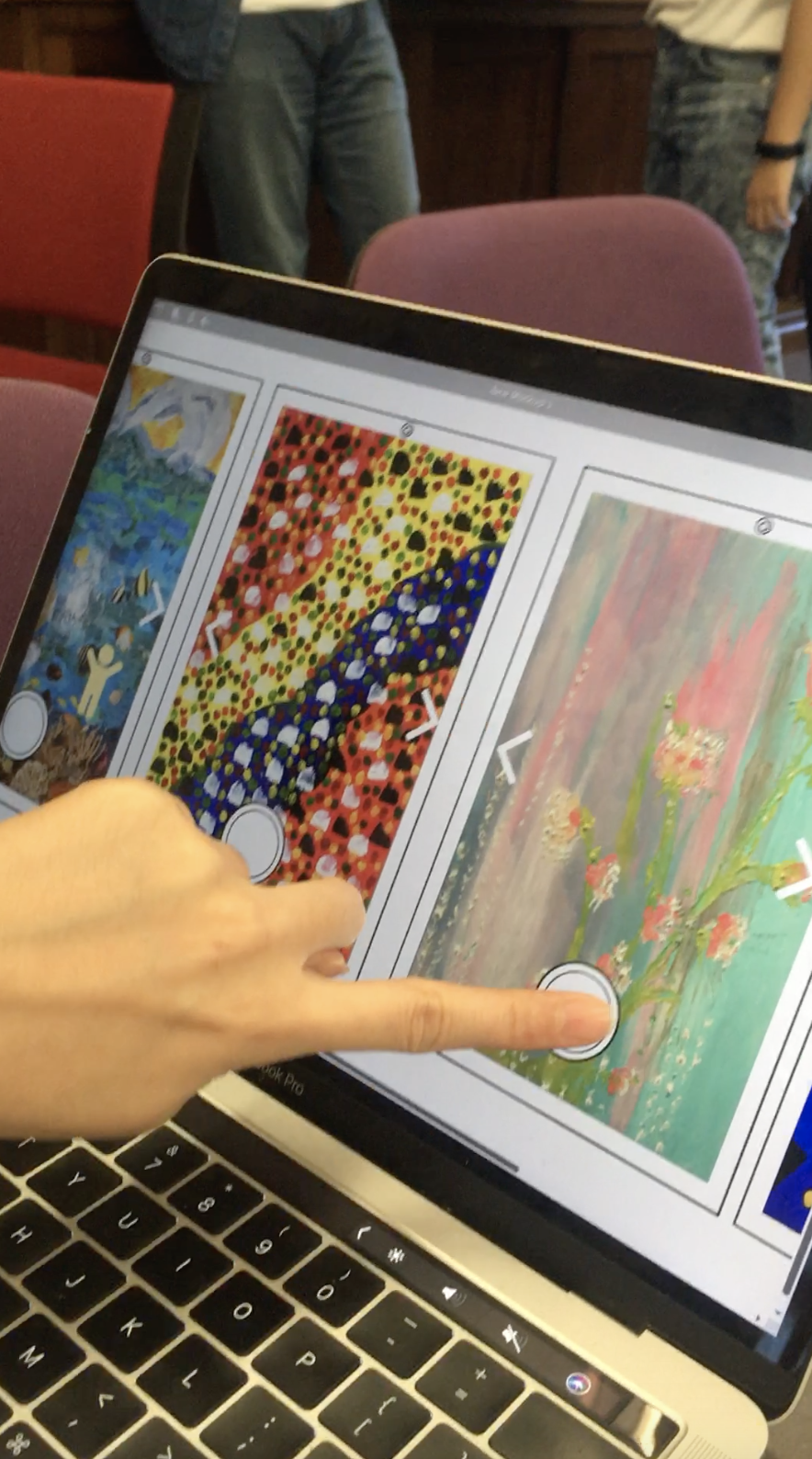
We made low-fidelity prototypes for the 2nd and 3rd round of user testing to further develop our ideas based on the previous feedback.We conducted the following types of testing: Think-aloud; Usability testing; Post experience semi-structured interview
Identified problems are, for example, “confirm” button on the selecting photos section is redundant. There is no “back” button.
Final mockups







What can be done next
- Potentially interview children with autism and their parents to receive first hand information about their situation so that our design solution can be adjusted accordingly.
- Collaborate with software engineers to test our product with existing interactive screen-based device.
- Work with technical experts to examine the possibilities of turning our design ideas into real product, analyse the costs to it and search for funding potentials.
What I’ve learned
- Physical prototyping is a great way to engage users to test our product. However, it would be great if we made a close to 1:1 ratio of physical model and placed it at the location where the users actually go to. This might give us more interesting insights and feedback.
- It is crucial that we identify all stakeholders at the very beginning of the process. For this project, it was easy to only focus on raising awareness, which neglects the needs of charities for raising funding in their autistic projects. Therefore, a call for action was equally important in the design concept.
- Communication is crucial at the early stage of the process and the basic direction has to be made clear across the board of all team members.
